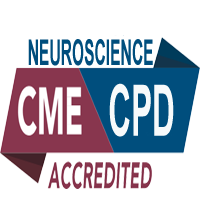Frid Hajibonabi
Tabriz University of Medical sciences, Iran
Title: Correlation between Dysphagia and nutritional indicators in ischemic stroke patients at the time of hospital admission
Biography
Biography: Frid Hajibonabi
Abstract
Dysphagia and poor nutritional status are common complications of stroke; however, possible associations between them are not well understood. Furthermore, it is necessary to perform a nutritional assessment of the patient in the early hours of admission, to determine both the nutritional status and the presence of dysphagia. So in this study, potential associations between dysphagia and nutritional indicators in patients with acute ischemic stroke at the time of hospital admission were evaluated. In this observational cross-sectional study, patients with ischemic stroke admitted to academic medical centers were enrolled. We studied 30 patients with stroke at the time of admission. The frequency of dysphagia and dysphasia grading score was evaluated. Nutritional indicators were assessed by knee height, mid arm circumference, triceps skin fold thickness, and calf circumference of all the admitted patients. The possible correlation between dysphagia and each parameter was evaluated. On clinical assessments 73.33% of patients demonstrated dysphagia. Dysphagia, was significantly associated with lower calf circumference (P<0.05), but not with other nutritional indicators (knee height, mid arm circumference, triceps skin fold thickness). To be concluded, Dysphasia is a prevalent problem in patients with acute ischemic stroke; however, it’s not associated with major nutritional failure at the time of hospital admission.

